5: Corrections for Contour Irregularities/ Oblique Incidence
1/11
There's no tags or description
Looks like no tags are added yet.
Name | Mastery | Learn | Test | Matching | Spaced |
|---|
No study sessions yet.
12 Terms
Contour irregularities aka
Oblique incidence
When does oblique incidence happen?
when the beam strikes a curved surface (striking an odd angle, an unconventional angle)
What are the 2 ways we can fix oblique incidence?
Clinically, using a beam modifying device such as wedges or bolus
Dosimetrically
What are the 3 dosimetric methods for treating Contour Irregularities?
Effective SSD method
TAR method
Isodose Shift Method
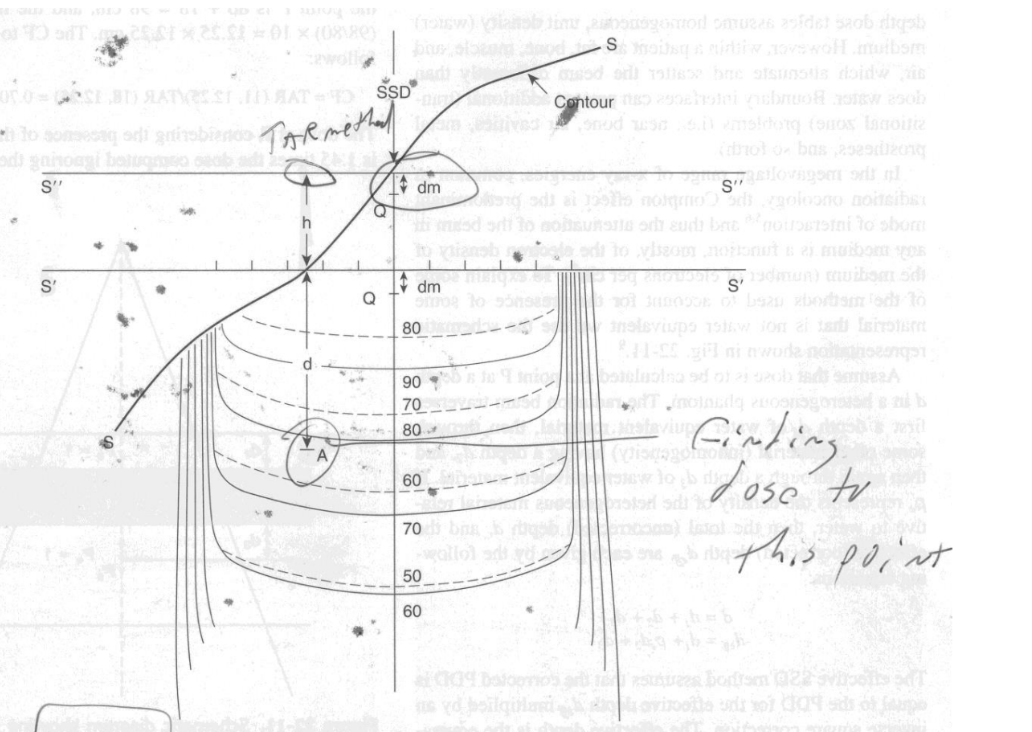
What method slides the isodose chart down so that its surface line is at S1-S1, reading off the PDD value point A and then multiplying in an I² correction for change in SSD?
Effective SSD method
TAR stand for
Tissue-Air Ratio
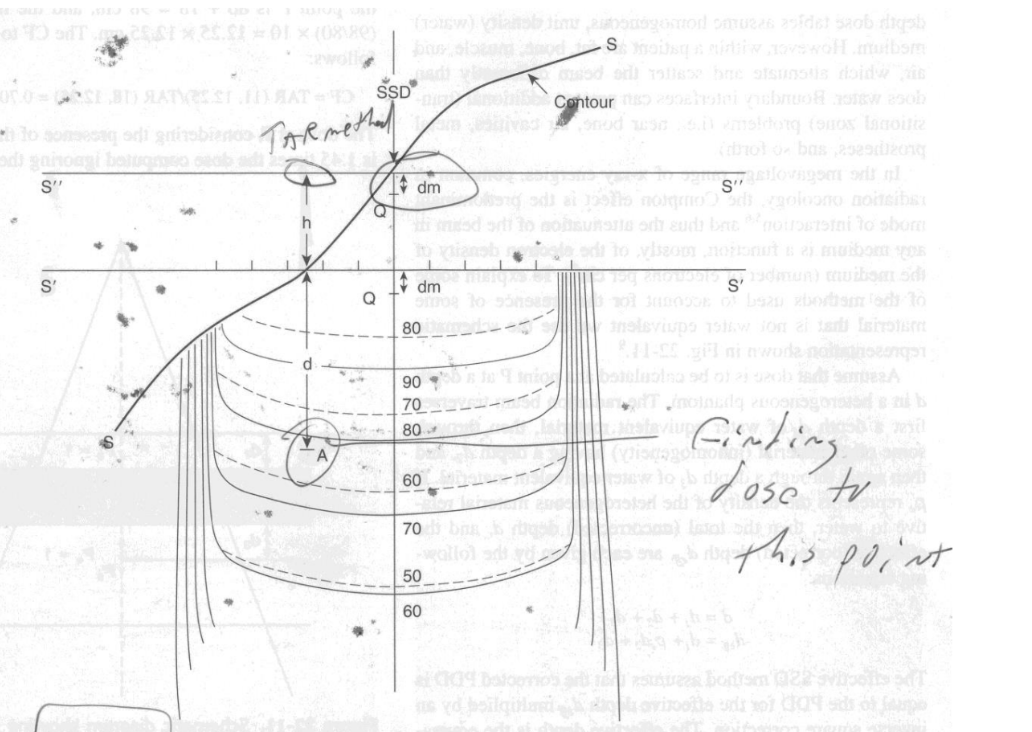
What method is where the SSD is kept the same as the CR, then a TAR correction factor is added to compensate for the air space.
TAR method
What method is used for making full isodose curves rather than making a point dose calculation?
Isodose Shift Method aka 2/3rd shift method
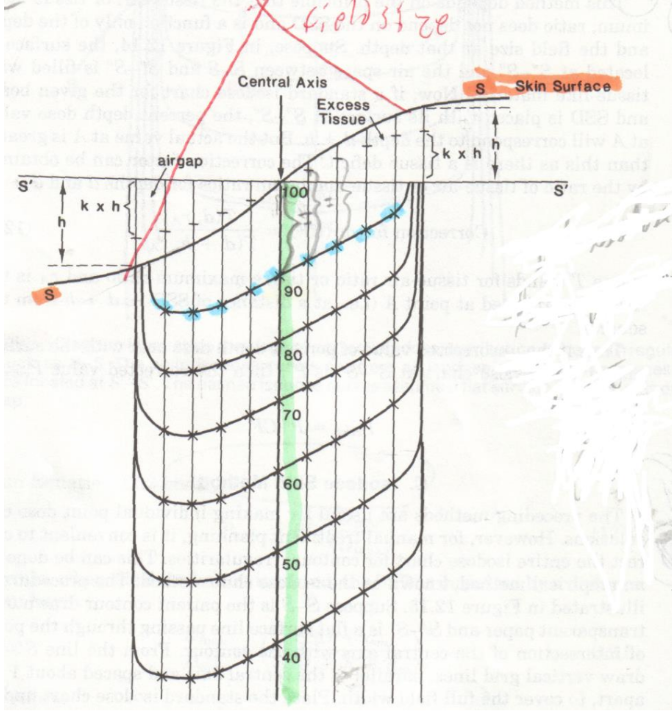
Why is the 2/3rd shift method called that?
The beam doesn’t exactly follow the angle of the skin surface, depending on the Energy of the beam that you use.
E.g. If you have a 45 degree tilt in the skin surface, the angle of the isodose curves would only be 2/3rd of that
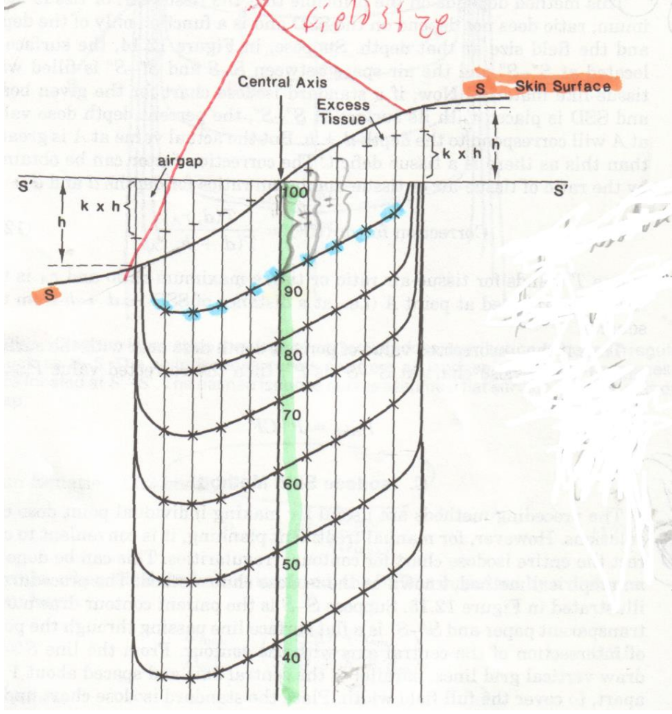
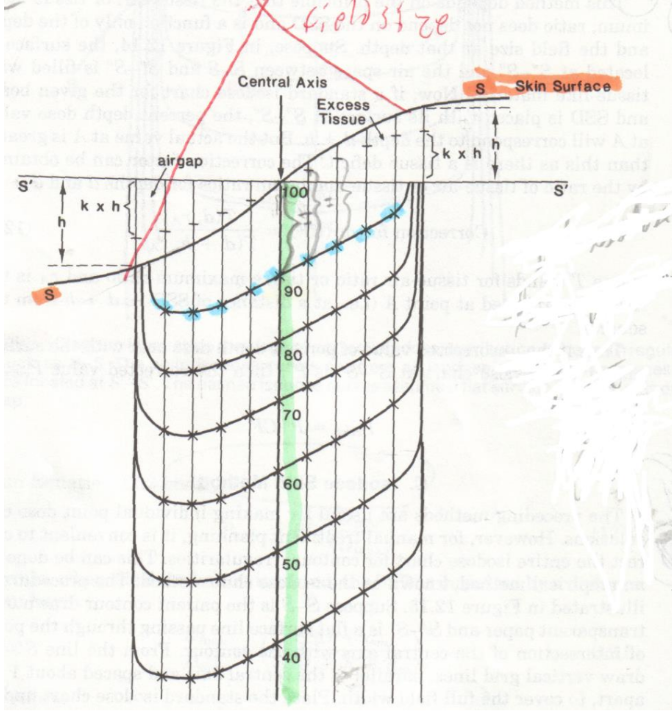
What kind of machine is this?
KV
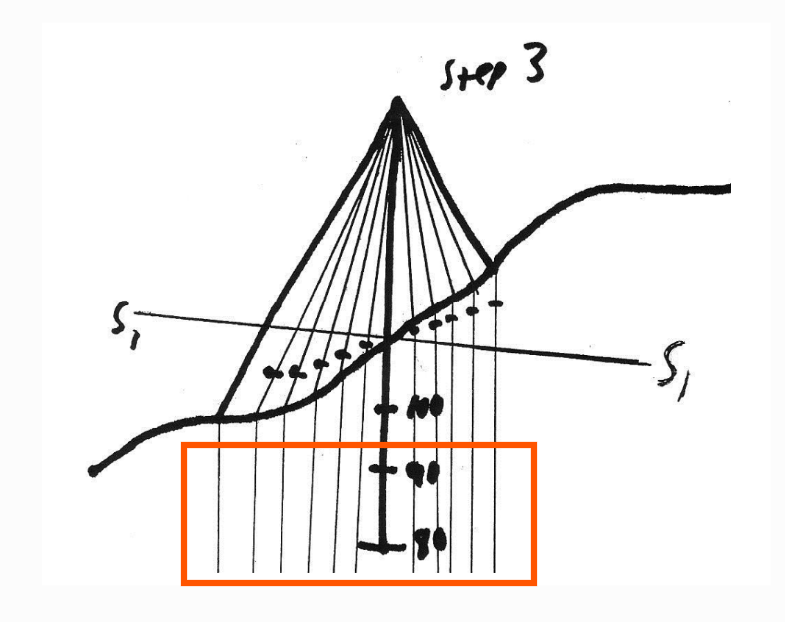
What are the lines in the box called? What method is this associated with?
Fan Lines
Associated with Isodose Shift Method aka 2/3rds Shift Method
True or False” The 2/3rds Shift Method is used for all energy beams
False:
different beams have different amounts of shift
e.g. 6 MV it is 2/3rds shift
18 MV is ½ shift